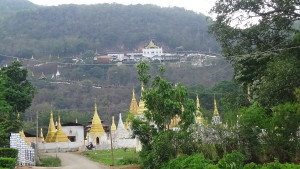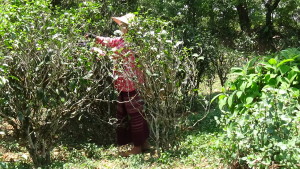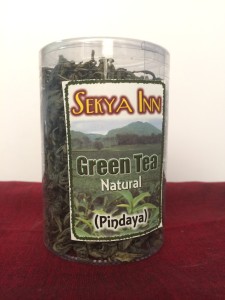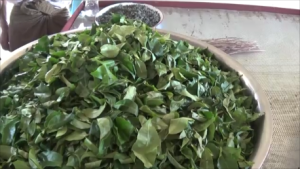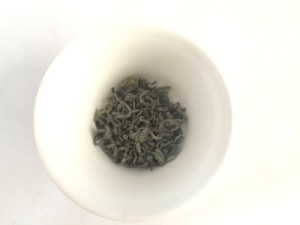In the early hours of the misty May morning we began our somewhat treacherous ascent up the Yasagyi mountain on the outskirts of Pindaya – a picturesque town located in the Southern Shan State – to attend the opening ceremony of the new community owned and operated green tea processing facility, the first of its kind in Myanmar. The Factory is located in the Danu Self Administered Zone home to the ethnic Danu people of Myanmar. This facility is enabling over 1,200 farmers from Sekaya-inn and surrounding villages (which also includes the Shan, Palaung, Pa-O and Taung Yoe people) to increase the quality of their production of tea as well as their income.
As we journeyed upwards, we were treated to the magnificent views of the glowing white stupas (zedi’s) that surround Botoloke Lake the famous Shwe Oo Min Pagoda Limestone Caves, and the many small tea plants dotted along the side of the mountain – as well as some of the tea pickers at work for the first flush tea of the season.
Shan State is known to be an historical home of tea drinking and eating, and Myanmar home to one of the ancient but extinct species of Camellia Sinensis (called the Camelia Irrawadiensis Barua), but today we were being treated to the first flush pickings of the Assamica variety from Sekaya-inn Village, and to bear witness to the new factory in sight, smell and taste!
We captured the event on the video posted here, and you can read more about the Model Green Tea Factory in our “Making an Impact” section of the blog.
Sekaya Inn Green Tea: The tea is a small leaf, medium density Assamica that was lightly roasted after oven baking in the factory (see this video for the complete process). As it was the first flush from the area, the tea was young and needed less heat to release the goodness we were seeking. We waited for 4 minutes after the boil before steeping for less than a minute. This allowed the light flavor to come through.
Tasting the tea:
The aroma was light and delicate and very fresh tasting. Southern Shan teas are not as well known as their Northern contemporaries, so there is not a great deal of information about the leaves (and quite often they aren’t classified into grades as one would hope to differentiate between a ‘one bud one leaf’ pick and a ‘one bud two leaf’ pick).
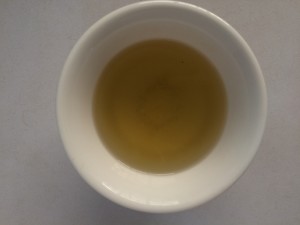
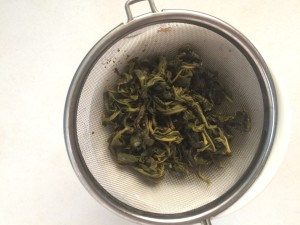 Upon brewing this tea in a gaiwan the vegetal aroma comes through even though it is still quite light and delicate. There are notes of mushroom in the wet leaves. The liquid was very light and sweet with just a hint of honey (the pictures here are after the first steep).
Upon brewing this tea in a gaiwan the vegetal aroma comes through even though it is still quite light and delicate. There are notes of mushroom in the wet leaves. The liquid was very light and sweet with just a hint of honey (the pictures here are after the first steep).
Although the tea is not yet ready for export, it won’t be long before the factory is ready to scale up and spread the goodness to your door. Make sure you check in with us in a few months to see the progress being made. It will be our pleasure to share it with you!
Tea Tasters: Christa Avery & Claire Burgess
Photos, Video & Story by Christa Avery
